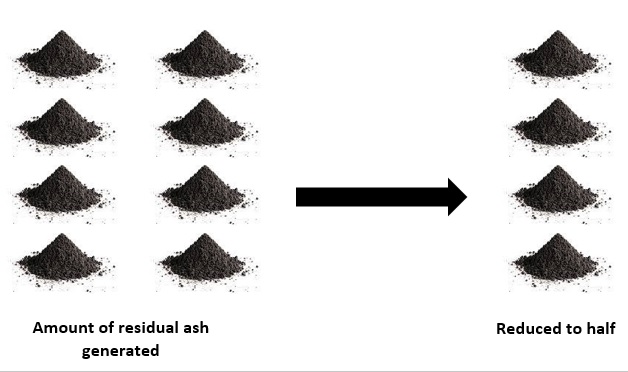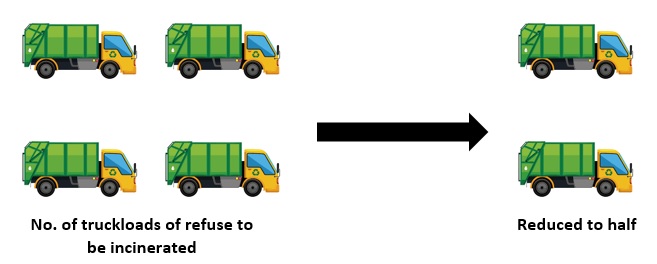Events & Promotions
|
|

GMAT Club Daily Prep
Thank you for using the timer - this advanced tool can estimate your performance and suggest more practice questions. We have subscribed you to Daily Prep Questions via email.
Customized
for You
Track
Your Progress
Practice
Pays
Not interested in getting valuable practice questions and articles delivered to your email? No problem, unsubscribe here.
- Nov 18
11:00 AM PST
-12:00 PM PST
Join us in a live GMAT practice session and solve 30 challenging GMAT questions with other test takers in timed conditions, covering GMAT Quant, Data Sufficiency, Data Insights, Reading Comprehension, and Critical Reasoning questions. - Nov 22
11:00 AM IST
-01:00 PM IST
Do RC/MSR passages scare you? e-GMAT is conducting a masterclass to help you learn – Learn effective reading strategies Tackle difficult RC & MSR with confidence Excel in timed test environment - Nov 23
11:00 AM IST
-01:00 PM IST
Attend this free GMAT Algebra Webinar and learn how to master the most challenging Inequalities and Absolute Value problems with ease. - Nov 25
10:00 AM EST
-11:00 AM EST
Prefer video-based learning? The Target Test Prep OnDemand course is a one-of-a-kind video masterclass featuring 400 hours of lecture-style teaching by Scott Woodbury-Stewart, founder of Target Test Prep and one of the most accomplished GMAT instructors.
D
Be sure to select an answer first to save it in the Error Log before revealing the correct answer (OA)!
Difficulty:
 55%
(hard)
55%
(hard)
Question Stats:
66% (02:04) correct 34%
(02:21)
wrong
34%
(02:21)
wrong  based on 18318
sessions
based on 18318
sessions
History
Date
Time
Result
Not Attempted Yet
Last year all refuse collected by Shelbyville city services was incinerated. This incineration generated a large quantity of residual ash. In order to reduce the amount of residual ash Shelbyville generates this year to half of last year's total, the city has revamped its collection program. This year city services will separate for recycling enough refuse to reduce the number of truckloads of refuse to be incinerated to half of last year's number.
Which of the following is required for the revamped collection program to achieve its aim?
(A) This year, no materials that city services could separate for recycling will be incinerated.
(B) Separating recyclable materials from materials to be incinerated will cost Shelbyville less than half what it cost last year to dispose of the residual ash.
(C) Refuse collected by city services will contain a larger proportion of recyclable materials this year than it did last year.
(D) The refuse incinerated this year will generate no more residual ash per truckload incinerated than did the refuse incinerated last year.
(E) The total quantity of refuse collected by Shelbyville city service's this year will be no greater than that collected last year.
Which of the following is required for the revamped collection program to achieve its aim?
(A) This year, no materials that city services could separate for recycling will be incinerated.
(B) Separating recyclable materials from materials to be incinerated will cost Shelbyville less than half what it cost last year to dispose of the residual ash.
(C) Refuse collected by city services will contain a larger proportion of recyclable materials this year than it did last year.
(D) The refuse incinerated this year will generate no more residual ash per truckload incinerated than did the refuse incinerated last year.
(E) The total quantity of refuse collected by Shelbyville city service's this year will be no greater than that collected last year.
Kudos
Bookmarks
The aim of the revamped collection program is "to reduce the amount of residual ash Shelbyville generates this year to half of last year's total." Let's examine the given information:
Which of the following is required if city services is going to reduce the amount of residual ash to half of last year's total?
In other words, if each truckload generates, on average, more ash this year than it did last year, then we need to reduce the number of truckloads by MORE than half in order to cut the amount of ash in half. Choice (D) IS required if the program is going to achieve its goal, so hang on to this one.
(D) is the best answer.
- Last year, ALL refuse collected by city services was incinerated. Make sure you notice key modifiers such as "all" and think about how they impact the meaning. In this case, we know that 100% of the collected refuse was incinerated.
- The incineration of that refuse generated a large quantity of residual ash. We aren't sure exactly how much residual ash was generated, but we know that it was a large quantity.
- This year, city services will reduce the number of truckloads of refuse to be incinerated to HALF of last year's number. This information is given, so we don't need to worry about how much trash Shelbyville is going to produce, the proportion that will be recycled, etc. Regardless of those details, we can safely assume that city services will have HALF as many truckloads of refuse to send to the incinerator this year. We just don't know whether reducing the number of truckloads by half will also reduce the ash by half.
- How will city services achieve this reduction in truckloads? By separating some unknown portion of the refuse for recycling. Again, we don't care about the details of the recycling/separation. All we care about is that the number of truckloads will be cut in half. But will that reduction in truckloads lead to the desired reduction in ash?
Which of the following is required if city services is going to reduce the amount of residual ash to half of last year's total?
Quote:
Let's say (A) doesn't happen, and some material that COULD have been separated for recycling gets incinerated instead. This would be unfortunate, but it would not change the GIVEN information. We already know that city services WILL reduce the number of truckloads to half of last year's level. That reduction in truckloads will occur even if city services sends some recyclable material to the incinerator. Thus, (A) is not required and can be eliminated.
Quote:
We are not concerned with the COSTS of the program. We are trying to determine whether reducing the number of truckloads by half will also reduce the amount of ash by half. Choice (B) is irrelevant and can be eliminated.
Quote:
Again, we don't care how much refuse is collected or what proportion of that refuse is recyclable. We already know that city services will cut the number of truckloads in half. This will happen regardless of whether this year's refuse contains a larger proportion of recyclable materials. Choice (C) is also irrelevant and can be eliminated.
Quote:
We know that city services will send half as many truckloads to the incinerator, but will that reduce the amount of ash by half? If the refuse incinerated this year generates MORE residual ash per truckload than did the refuse incinerated last year, then reducing the truckloads by half will NOT reduce the amount of ash by half.
In other words, if each truckload generates, on average, more ash this year than it did last year, then we need to reduce the number of truckloads by MORE than half in order to cut the amount of ash in half. Choice (D) IS required if the program is going to achieve its goal, so hang on to this one.
Quote:
Once again, we don't care how much refuse is collected. Regardless, the number of trucks will be cut in half compared to last year. Choice (E) can be eliminated.
(D) is the best answer.
Kudos
Bookmarks
pavan2185
Hi Pavan,
Let me explain option D with an analogy here.
Let's suppose if a doctor makes the following suggestion to you.
You need to reduce your calorie intake to half the current levels. Therefore, you should eat half as much as you currently eat. (so if you eat say 20 units, now you should eat 10 units)
Now, for the doctor's suggestion to work (i.e. reduce calorie intake to half the current levels), you should not eat, say, oily foods which contain more calories per unit. If you do that, even though you may eat only 10 units of food but your actual calorie intake will not be half of your previous level since you are eating more oily foods now which are providing you more calories per unit.
Therefore, for doctor's suggestion to achieve its aim (reduce calorie intake to half), the amount of calories per unit of food should not increase from last year.
Do you get this?
Exactly parallel is the reasoning used in option D.
You want to reduce residual ash to half the amount. What you do is that you reduce the number of trucks to half. Would that achieve the objective.
The answer is yes but only if you don't load each truck with more residual ash than the year before.
Does this help?
Thanks,
Chiranjeev
















